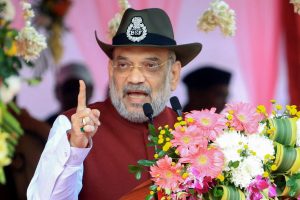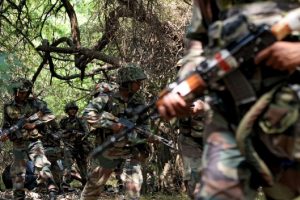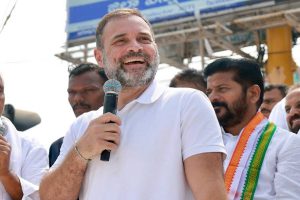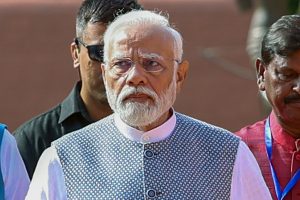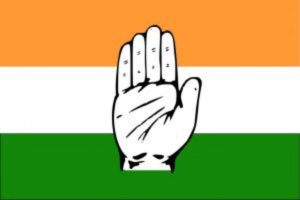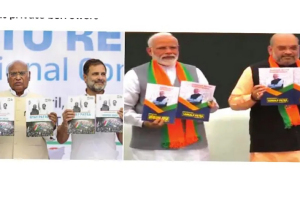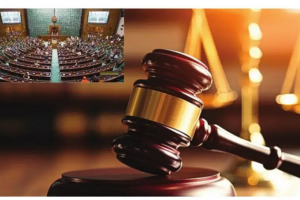Sheikh Abdullah, who was the principal architect of Kashmir’s accession to India was dismissed from the position of Prime Minister of Kashmir on 9 August 1953, on New Delhi’s machinations. How could this happen when Nehru was India’s Prime Minister, especially because Nehru and Sheikh Abdullah were not only close political colleagues but also good friends? To be able to answer this question, one should look to the series of developments preceding his removal. On 26 October 1947 when Maharaja Hari Singh took the decision on Kashmir’s accession to India, the State had ceded to India its authority only in three subjects ~ foreign affairs, defence and communications. In these matters the Government of India would have absolute power to take decisions which would be binding on Jammu and Kashmir, while in matters internal, it would enjoy autonomy.
It is important to note that the ‘internal autonomy’ granted to the State under Article 370 of the Constitution was quite different from the autonomy enjoyed by other provinces. This special status was given to Jammu and Kashmir not only because of its demographic composition and geo-strategic location but also because the J&K issue was then in the agenda of the UN and as such its future was uncertain. Even Dr Shyama Prosad Mukherjee, who was a Member of the Constituent Assembly and the Minister for Industry and Civil Supplies in Nehru’s first Cabinet, was a party to the decision and justified the inclusion of Article 370 in the Constitution as a temporary measure. This becomes clear from his speech in the Lok Sabha on 7 August 1952 where he was speaking as a leading member of the Opposition.
While criticising Sheikh Abdullah and the role of the UN in the Kashmir dispute he said that he had differences with Nehru as well on many issues. Nevertheless, by referring to Gopalswami Ayyangar’s arguments justifying the inclusion of Article 370, he said, “… assurances had been given to Kashmir that constituent assembly would be allowed to be formed and the wishes of the people of Kashmir ascertained through a plebiscite. Those were the factors that had to be fulfilled and that was why a permanent decision could not be taken. It was a temporary provision.” Referring to the demand that Jammu and Ladakh, as two distinct parts of J&K State be allowed to opt for full integration with the Indian Union if they so desired, he added: “ I am not suggesting that you send Kashmir or Kashmir Valley out of India. And it is not for me or for us sitting in this House to decide the matter.
As the Prime Minister pointed out very rightly that it is the people of the territory who will have to decide … Let Kashmir continue in any way that it likes, even more autonomy, with less possibility of interference by India; that is a possibility which we cannot rule out.” He added that the Government of India was committed “… to the position that an opportunity would be given to the people of the State to decide for themselves whether they will remain with the Republic [of India] or wish to go out of it.” As a first step towards the implementation of the ideas enshrined in Article.370, a Constituent Assembly for J&K was set up in 1951 to determine the constitution of the State.
Perhaps the inclusion of Article 370 was intended to strike a balance between the State’s desire for maintaining its distinct identity and internal autonomy, and the demand for its full integration within the Indian Union. But from its very inception, differences arose between Sheikh Abdullah and the Indian government. Sheikh Abdullah was quite unhappy when he saw the final version of Article 370, as included in the Constitution, because it was different from the draft of the Article (Article 306A) to which he had given his consent. On 17 October 1947, in a letter to Gopalswami Ayyangar, he expressed his disappointment as the original draft of the Article, to which he had given his consent, had been modified without consulting the National Conference leadership.
The differences between Sheikh Abdullah and the Indian government regarding the meaning of Article 370 and the purpose for which it was included in the Indian Constitution may be traced to the differences in their perceptions of it. Explaining this, M J Aslam wrote later that Sheikh Abdullah had a ‘self-pleasing’ notion of Article 370 and looked upon Kashmir as a ‘free country’ with power to decide on its internal matters through the State Assembly, where the Indian role would be limited to the three subjects mentioned in the Instrument of Accession. Ayyangar and other Indian leaders, however, looked upon it as a ‘tunnel’ through which the whole of the Indian Constitution could be applied to the State. Progressive attenuation of Kashmir’s autonomy became a major issue in Jammu and Kashmir’s relations with New Delhi.
The process began soon after Kashmir’s accession to India. Sheikh Abdullah resented the frequent orders from the states ministry (in New Delhi) and wrote to Nehru on 10 July 1950: “I have several times stated that we acceded to India… despite our having so many affinities with Pakistan… because we thought our programme will not fit with their policy. If, however, we are driven to the conclusion that we cannot build our state on our own lines, suited to our genius, what answer can I give to my people and how am I to face them?” To bridge the gap between these two divergent perceptions of Article 370, a deal was struck between the National Conference (read Sheikh Abdullah) and Nehru, known as the Delhi Agreement (24 July 1952). Earlier, on 10 April 1952, Sheikh Abdullah, while speaking at a public meeting in Ranbirsinghpura in Jammu, made his position on autonomy clear by stating that any attempt to apply the Indian Constitution to Kashmir in all respects would be ‘unrealistic and childish…’ In the same speech he said that communalism had not yet been buried in India. “Many Kashmiris are apprehensive as to what will happen to them and their future if, for instance, something happens to Pandit Nehru.”
Such a statement obviously did not endear him to Nehru or to other Indian leaders and he tried to be more cautious in his statements subsequently; while he avoided meeting the Prime Minister in New Delhi for talks, he did send his emissaries to prepare the ground for an agreement ~ the Delhi Agreement ~ that would ensure the ‘autonomy’ of Jammu and Kashmir. According to the Agreement, J&K would enjoy certain special privileges, while conceding several powers to the Centre. These special privileges included its right to have its own Constitution and its own flag, to be flown alongside the Indian National flag; the Assembly was also given the power to grant special rights and privileges to State subjects, in view of the ‘State Subject Notifications of 1927 and 1932’.
With regard to ‘Fundamental Rights’, while it was agreed that the people of J&K would enjoy fundamental rights, in view of the State’s special situation (arising out of Abdullah’s land reform policy) the whole chapter relating to ‘Fundamental Rights’ of the Constitution would not be applicable to the State of J&K. Similarly, the Supreme Court’s jurisdiction, ‘for the present’, would be limited to appellate jurisdiction only. Finally, the residuary powers of the legislature would be vested in the J&K State itself, not in the Centre, as is the provision for other States of the Union. The Delhi Agreement also provided for the abolition of hereditary monarchy; the head of the State would be called Sadr-iRiyasat and would be appointed /recognised by the President of India, on the recommendations of the State Assembly while the head of the State Cabinet would be called the Prime Minister.


